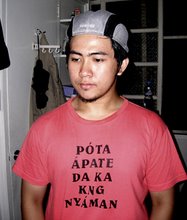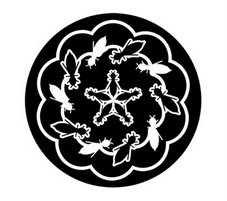The publication next month of the English translation of Fray Diego Bergaño’s twin books Arte de la Lengua Pampanga (Grammar of the Kapampangan Language, published in 1729) and Vocabulario de Pampango (Kapampangan Vocabulary, published in 1732) is a big cultural event that Kapampangans all over are eagerly awaiting.
For the first time, ordinary Kapampangans will have access to the highly regarded documents which previously, only scholars with Spanish proficiency could read.
“The Bergaño books are veritable treasure troves of linguistic and anthropological data,” Robby Tantingco, Director of Holy Angel University’s Center for Kapampangan Studies, says. “You can imagine the impact on Kapampangan scholarship when hundreds of students, teachers and researchers get their hands on these documents for the first time.”
The Center is publishing the books in cooperation with the National Commission for Culture and the Arts (NCCA). Two Catholic priests in Pampanga, Fr. Venancio Q. Samson and Fr. Edilberto V. Santos, translated the Vocabulario and the Arte, respectively.
The books record the state of the Kapampangan language in the early 1700s before adulteration set in. “These words can be reintroduced today to enrich our language and expand our vocabulary,” Tantingco says.
Examples of words found in the dictionary that have fallen out of usage over the years are:
sipan (toothbrush)
langolango (toilet)
galang (bracelet)
yubyub (barbecue)
carangcarang (baby walker)
amuyam (sponge)
lambangan (rice dispenser)
limpasut (shark)
talangtalang (goldfish)
batanglaua (spiderweb)
...as well as numerals, from isa (one) to lacsa (ten thousand), gatus (one hundred thousand) and sangyuta (one million).
“Our problem today is that we can only speak Kapampangan but can no longer read and write in Kapampangan,” Tantingco says. “Sure, there are still many Kapampangan speakers, but their vocabulary is limited to everyday conversation. When we go into lengthy intellectual discourse, we shift to English or Filipino.”
“To show you how sophisticated our language is, the verb ‘to cross legs’ has a specific term for women (timpo) and for men (sila),” Tantingco points out.
“Same thing for ‘to dance,’ which is indac for women and terac for men. We have words for every animal sound, like:
ngeung (cat’s meow)
kaung (dog’s bark)
gocgoc (pig’s grunt)
gacgac (cow’s bellow)
siac (an insect’s chirp)
siuc (a bird’s chirp)
patoc (hen’s cackle when laying eggs)
cucuc (hen’s cackle after eggs have hatched)
Bergaño’s books contain Kapampangan words in practically all areas of study and human activity, which can help in the campaign to “intellectualize” Kapampangan. In medicine, for example, the following Kapampangan words can be reintroduced:
taguilid (diarrhea)
buclo (goiter)
bugsuc (vitiligo)
mabayag (hernia)
batulalangan (myopia)
bilig (cataract)
culapad (intestinal worm or amoeba)
tuma (pubic lice)
yacyac (swollen spleen)
sigasig (asthma)
bucoco (malignant tumor)
dacclong (bowlegged)
singcul (twisted arm)
simpac (cleft mouth)
gutul (head contusion)
As the 1732 dictionary reveals, Kapampangan is capable of expressing sublime thought and emotion.
The word sap or sapni, for instance, refers to the “camaraderie among friends, even between a slave and a master” and aniani to “the reverence of a subject to a superior as well as reverence of a superior to a subordinate.”
The word lualu means “the virtue of championing the defenseless,” saclong “to take the punishment meant for another or to pay the debt that’s not your own.”
Quaint words like:
payungdaguis (mushroom, but literally, “mouse’s umbrella”)
sulungdaguis (morning star; lit. “mouse’s lamp”)
sabo susu (milk; lit. “soup from the breast”)
bungang tudtud (dream; lit. “fruit of sleep”)
pinanari (rainbow; lit. “king’s loincloth”)
anac sulip (illegitimate child; lit. “child from the basement”)
...show the creative possibilities of the language.
There are also specific and often graphic terms for times of the day, colors, body parts, family ties, flora and fauna, sex and erotica, as well as etymology of common Kapampangan surnames like:
laus (hole)
tayag (to lift)
sagum (to mix drinks)
ibe (to become intoxicated from chewing betel nut)
canlas (to succeed in office)
abad (slight wound)
tulabut (to spurt)
viray (boat)
calma (luck)
suba (to navigate upstream)
...and many more.
“Bergaño’s books can reinvigorate the Kapampangan language by supplying it with thousands of rediscovered words, which is why I consider the translation of these books a real breakthrough in Kapampangan studies ” Tantingco says.
Alben meng manyaman, boy!
Subscribe to:
Post Comments (Atom)








5 comments:
ayba mo ne! santing na yan, kapilan ya lumual ya ing libro?
Hi! I am trying to learn Kapampangan
for almost three months now. Your link to the Kapampangan lessons was a big help to me but it seems that I really have too many preoccupations this summer and until now, I still find it hard to make Kapampangan phrases but I can now understand some of the Kapampangan posts of my friends.
Anyway, I bought a book that is an English reprint of an old Spanish book, Arte Y Reglas Kapampangan by Fr. Franciso Coronel, also from Holy Angel University. It's a good book but I feel maybe I might be better helped by the two books you described in your blogs.
regards,
Jay
olec, next week atin na!
hello, Jay! Glad you're learning other Philippine languages! I myself will study Ilocano and Cebuano after I master Kapampangan! I think I also have that grammar book you mentioned and it was a nice read.
whoah this blog is wonderful i like studying your
articles. Keep up the good work! You realize, lots of people are looking around for this information, you could aid them greatly.
Also visit my blog : online casino canada
Its like you learn my mind! You appear to grasp
a lot approximately this, like you wrote the ebook in it or something.
I feel that you could do with a few percent to drive the message home a bit, but other than
that, this is great blog. A great read. I will certainly be back.
Take a look at my web blog - laser cellulite treatment
Post a Comment